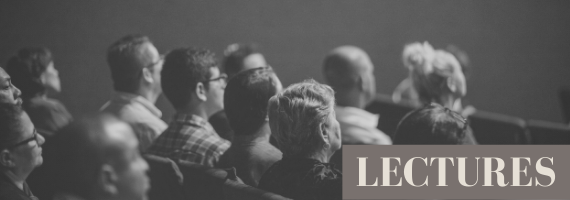
LAMAS Lecture Programme
October 2023 - May 2024
Many lectures will be hybrid, taking place in-person and as Zoom webinars. Please check the lecture details for the in-person location.
The lectures start at 6.30 PM, and last for 1 hour.
Tickets can only be booked through Eventbrite. Ticket booking will be usually available 2 weeks before a lecture. LAMAS and CIfA LAG members can request an Eventbrite promo code to obtain free tickets. As usual non-members are very welcome, but a small charge of £2.50 will be levied to help pay for Zoom.
October 10, 2023 - HybridLecture Theatre G6, Institute of Archaeology, UCL, 31-34 Gordon Square, London, WC1H 0PY |
|
| Stamped Roman timbers from London and elsewhere - Tracing evidence of economy and emperors | Sadie Watson and Damian Goodburn, MOLA |
| The MOLA excavations at Sugar Quay on London's Roman waterfront revealed many wonderful examples of rare branded stamps on the timber quay structures. These stamps are very useful as evidence of the timber trade that served the port. There are other examples of stamped timbers from across London as well as elsewhere in the western Roman Empire and this lecture will draw together this evidence to discuss what these tiny motifs can tell us about London, the construction of its 2nd century quayside, and its place within the wider Empire. | |
November 14, 2023 - HybridLecture Theatre G6, Institute of Archaeology, UCL, 31-34 Gordon Square, London, WC1H 0PY |
|
|
A Tale of Two Fords? An alternative model of Roman road infrastructure in Southwark and beyond |
Becky Haslam |
| This lecture will present evidence for a series of revisions to the current model of Roman road infrastructure to the south of Southwark’s Borough Channel. Recent discoveries on the sites of Brandon House and Harper Road, in combination with a reappraisal of the existing corpus of evidence on this topic, together make a convincing case that the current model be modified. Primarily, this involves a revision to the route of Stane Street across the southern mainland of Roman Southwark, from which a new location for the junction between Stane Street and Watling Street can be extrapolated. This undertaking in turn necessitates that the evidence that was previously used to justify the former course of Stane Street be reviewed. It is suggested here that this points towards the presence of a hitherto unknown road that extended westwards from Watling Street, in the direction of modern Vauxhall. The implications of this revised model on Roman-era land use at a local level with then be discussed, with emphasis on the location of the ‘ritual shafts’ of the Swan Street site, before concluding with a discussion of the potential regional implications. | |
December 12, 2023 - HybridThe Gallery, Alan Baxter Associates, Cowcross Street |
|
|
The failure of London: the long fourth century |
Dominic Perring, Emeritus Professor of Archaeology, UCL, Institute of Archaeology |
|
This talk - based in large part on the concluding chapters of Dominic's recent book 'London in the Roman World' will attempt to set the archaeological evidence for later Roman London within its wider historical context. |
|
January 9, 2024Lecture Theatre G6, Institute of Archaeology, UCL, 31-34 Gordon Square, London, WC1H 0PY |
|
|
Life, Death and Worship at HM Tower of London |
Alfred R. J. Hawkins, Assistant Curator of Historic Buildings |
| This lecture will discuss the history and archaeology of the Chapel Royal and Royal Peculiar of Saint Peter ad Vincula which, for the last 500 years, has been the parish church of HM Palace and Fortress the Tower of London. The talk will include a chronology of the buildings development, the impact of the designation of 'Royal Peculiar' upon archaeological excavations, the results of excavations undertaken in 2019 and of the subsequent analysis of skeletal remains exhumed during those works funded by the LAMAS Research Grant 2022/23. | |
February 13, 2024Lecture Theatre G6, Institute of Archaeology, UCL, 31-34 Gordon Square, London, WC1H 0PY |
|
|
AGM and Presidential Address - Mapping medieval London |
Vanessa Harding, Emeritus Professor of London History, Birkbeck, University of London |
|
The LAMAS AGM will start at 6PM, followed by the lecture at 6.30 PM The presidential lecture will look at the challenges and rewards of creating historical maps of London. In particular it will focus on medieval London, and the map published by the Historic Towns Trust in 2019. By 1300, London was at its medieval zenith of population size and wealth, and there is plentiful documentary evidence for features, street-names, and land-use, as well as governance and economic activity. Traces remain – mostly underground - of some of the city’s 100-plus parish churches and its many religious houses, and of a few private houses and public buildings. How can all this information be organised and represented on a map? And what do we learn by doing so? |
|


